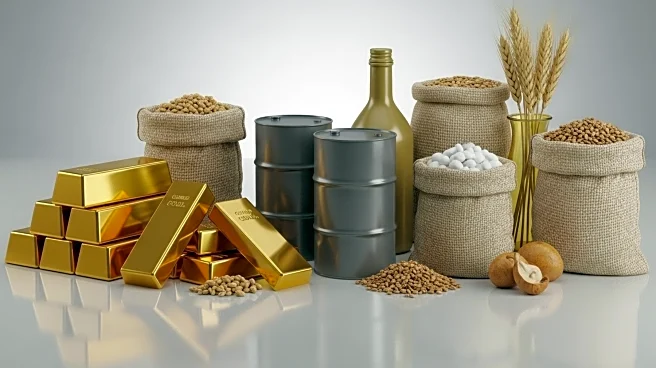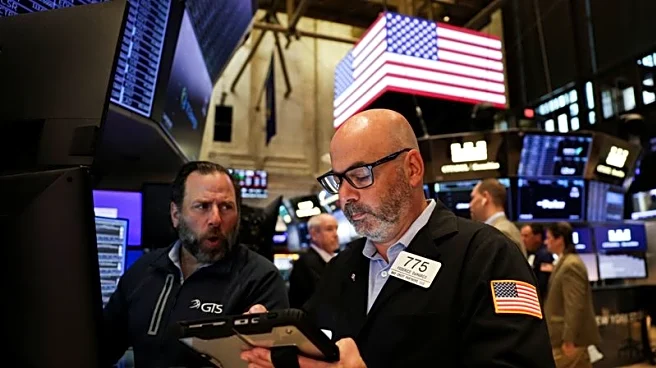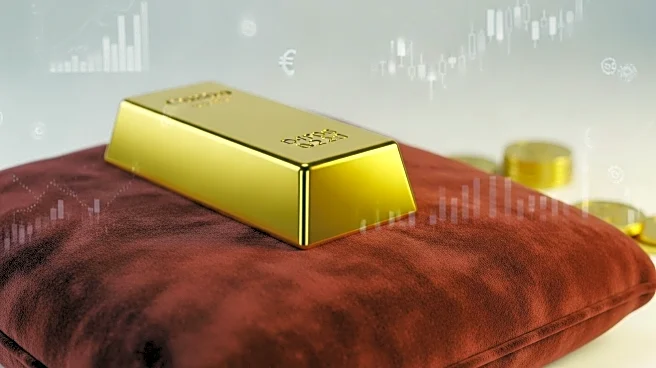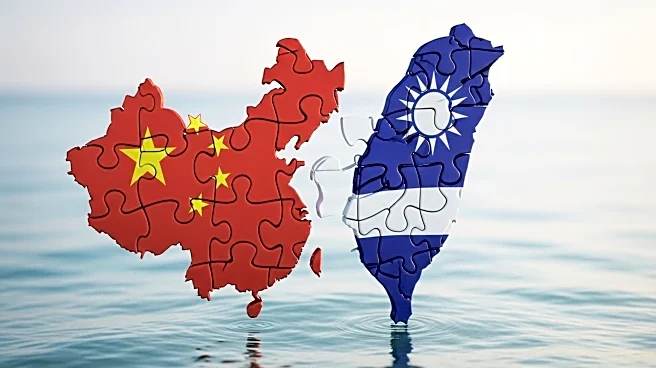What's Happening?
Commodity prices have seen significant increases this year, with gold reaching a record high of $4,059 per ounce, marking a 51% year-to-date increase. Silver has performed even better, with a 70% rise, while palladium and platinum have gained 59% and 76%, respectively. Copper has also climbed 24%, trading at $4.86 per pound. These increases are attributed to geopolitical tensions, including conflicts in the Middle East and the ongoing war between Russia and Ukraine, as well as China's assertive actions in the South China Sea. Additionally, a weaker US dollar has made commodities cheaper in foreign currencies, boosting demand. Central banks have been increasing their gold reserves, further driving up prices.
Why It's Important?
The surge in commodity prices reflects broader economic and geopolitical uncertainties, which have led investors to seek safe havens. Precious metals like gold and silver are traditionally seen as protective assets during times of economic instability. The weak US dollar has also played a role, as it makes dollar-priced commodities more attractive to foreign buyers. This trend indicates a shift in investment strategies, with more focus on commodities as opposed to equities, which are perceived as overvalued. The increased demand for commodities could signal the beginning of a new super-cycle, potentially impacting global trade and economic policies.
What's Next?
If geopolitical tensions continue and the US dollar remains weak, commodity prices may continue to rise. Central banks are likely to keep increasing their gold reserves, further supporting high prices. Investors might increasingly turn to commodities as a hedge against inflation and economic uncertainty. The potential for a commodity super-cycle could lead to long-term shifts in investment strategies, with more focus on tangible assets. Additionally, the ongoing geopolitical conflicts and economic policies will likely influence commodity markets, requiring close monitoring by investors and policymakers.
Beyond the Headlines
The rise in commodity prices could have deeper implications for global economic stability. As countries diversify away from the US dollar, there may be shifts in international trade dynamics and currency reserves. The increased focus on commodities could also lead to changes in environmental policies, as the demand for metals like copper and silver grows due to their use in renewable energy technologies. Furthermore, the geopolitical tensions driving these price increases could lead to more significant global conflicts, affecting international relations and economic cooperation.













